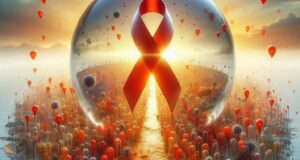it opens the door not only to a complex history of virology but also to the collective human response — particularly how public health systems around the world attempted to control its spread. Imagine the global public health response like a fire brigade called to contain a wildfire spreading through a densely populated forest.

The Spark: Early Days of Confusion
At the start, the fire (HIV/AIDS) burned quietly. In the early 1980s, few recognized its smoke — mysterious illnesses affecting young, otherwise healthy people. By the time the fire alarms (initial case reports) began ringing, the flames were already licking through communities, particularly among gay men, drug users, and later, heterosexual populations and newborns. Asking “AIDS where did it come from” wasn’t just about pinpointing the origin in primates or the forests of Central Africa — it was also about identifying how the flame was passed from one human to another.
First Responders: Public Health Takes Action
As with any emergency, the initial reaction was confusion followed by urgency. Public health agencies became firefighters, rushing to douse the flames. Their first tools were education and awareness. Posters, community outreach programs, and even celebrities were enlisted to tell people how HIV spreads — through blood, sex, and from mother to child — and how it doesn’t — through handshakes, mosquito bites, or shared cups.
Imagine a fire team discovering that water alone can’t contain the blaze; they need firebreaks (behavioral changes) and fire-resistant barriers (condoms, clean needles, antiretroviral drugs). Public health systems worldwide rolled out campaigns promoting safe sex, needle exchange programs, and blood screening for transfusions. These actions were the metaphorical firebreaks — preventing HIV from jumping from one cluster of the population to another.

Building a Defense: Long-Term Strategies
Once the immediate blaze was somewhat controlled, health systems shifted from reactive to proactive strategies. Governments began building fire stations — long-term programs like HIV testing clinics, confidential counseling services, and community-led initiatives. Funding from organizations like the WHO, UNAIDS, and the Global Fund acted as water supplies — crucial to sustaining the effort.
When people ask, “AIDS where did it come from?”, they often overlook the parallel question: How did we fight it once it arrived? The answer lies in decades of hard-won public health battles. Antiretroviral therapy (ART), for instance, turned HIV from a death sentence into a manageable chronic condition. ART is like a sprinkler system installed inside the home of someone already touched by fire — it doesn’t remove the danger, but it prevents further damage and makes living with the threat possible.
Community as Fire Marshals
Perhaps the most powerful response came not just from governments but from people living with HIV/AIDS themselves. Activist groups like ACT UP in the U.S., the Treatment Action Campaign in South Africa, and many others around the globe became the fire marshals of this crisis — pushing for policy change, better treatment access, and public accountability.
These groups redefined the narrative of “AIDS where did it come from” by showing that beyond origins, what truly matters is how we respond, how we care, and how we ensure that future fires are spotted early, contained swiftly, and leave minimal scars.
The full story includes how humanity — like a well-coordinated fire response team — mobilized resources, educated the public, built health infrastructure, and empowered communities. Though the flames still flicker in some corners of the world, the collective public health response has ensured they no longer rage unchecked. The battle against AIDS is ongoing, but thanks to strategic public health measures, it’s a fight we are far better equipped to win.




